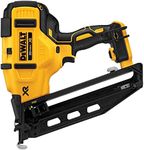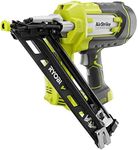We Use CookiesWe use cookies to enhance the security, performance,
functionality and for analytical and promotional activities. By continuing to browse this site you
are agreeing to our privacy policy
Best Cordless Finish Nailers
From leading brands and best sellers available on the web.#2

DEWALT
DEWALT 20V MAX* Cordless Brad Nailer Kit, 18GA (DCN680D1)
View Product
#3
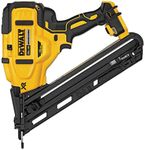
DEWALT
6%OFF
20V MAX 15GA Angled Finish Nailer Bare
View Product
#4
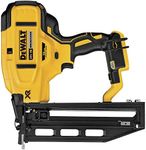
DEWALT
6%OFF
20V MAX 16GA ST Finish Nailer Bare
View Product
#5
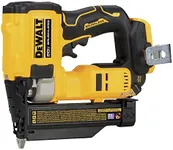
DEWALT
20V MAX 23GA PIN Nailer Bare Tool
View Product
#6
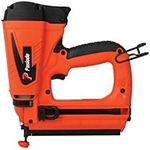
Paslode
Paslode 903800 IMLi250 - Impulse™ Lithium Ion 16GA Finish Nailer
View Product
#7
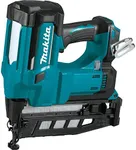
Makita
Makita XNB02Z 18V LXT Straight Finish Nailer, 16 Gauge, 2-1/2"
View Product
#8

Milwaukee
Milwaukee 2839-20 M18 Fuel 15 Gauge Finish Nailer
View Product
#9
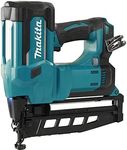
Makita
Makita DBN600Z 18V LXT 2-1/2" Finish Nailer 16 Gauge (Tool Only)
View Product
#10
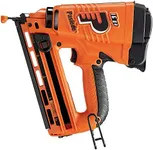
Paslode
PASLODE 902400 Paslode - 16 Gauge Angled Cordless Finish Nailer - Battery and Fuel Cell Powered - No Compressor Needed
View Product
Buying Guide for the Best Cordless Finish Nailers
Choosing the right cordless finish nailer can make your woodworking or home improvement projects much easier and more efficient. These tools are designed to drive finish nails into wood and other materials without the need for a compressor or hose, giving you more freedom to move around. When picking a cordless finish nailer, it's important to consider how you'll use it—whether for occasional DIY tasks, regular home repairs, or professional carpentry. Understanding the key specifications will help you find a model that matches your needs and ensures smooth, reliable performance.Nail GaugeNail gauge refers to the thickness of the nails the tool can use, with lower numbers indicating thicker nails. Common gauges for finish nailers are 15, 16, and 18. Thicker nails (15 or 16 gauge) provide more holding power and are better for heavy trim or baseboards, while thinner nails (18 gauge) are less visible and ideal for delicate trim or smaller projects. Consider what types of projects you'll tackle most often—if you need versatility, a mid-range gauge is a good choice, but for fine finish work, a higher gauge (thinner nail) may be best.
Nail Length CapacityThis spec tells you the range of nail lengths the nailer can handle. Longer nails are needed for thicker or harder materials, while shorter nails are suitable for thin trim or delicate work. Nailers typically support a range, such as 1 to 2.5 inches. If you plan to work on a variety of projects, look for a nailer with a wide range of nail length compatibility. For specific tasks, match the nail length to the material thickness you'll use most often.
Battery VoltageBattery voltage indicates the power of the cordless nailer. Higher voltage usually means more driving force and longer runtime, but it can also make the tool heavier. Common voltages are 18V or 20V. If you need to drive nails into harder woods or plan to use the tool for extended periods, a higher voltage may be beneficial. For lighter, occasional use, a lower voltage can keep the tool lighter and easier to handle.
Magazine CapacityMagazine capacity is the number of nails the tool can hold before needing a reload. Larger capacities mean fewer interruptions, which is helpful for big projects. However, a larger magazine can add weight and bulk. If you often work on long runs of trim or baseboards, a higher capacity is convenient. For smaller, quick jobs, a standard capacity is usually sufficient.
Weight and ErgonomicsThe weight and design of the nailer affect how comfortable it is to use, especially for long periods or overhead work. Lighter models are easier to handle and reduce fatigue, while ergonomic grips and balanced designs improve control. If you expect to use the nailer frequently or for extended sessions, prioritize comfort and balance. For occasional use, weight may be less critical, but still consider how the tool feels in your hand.
Depth AdjustmentDepth adjustment allows you to control how deep the nail is driven into the material. This is important for achieving a clean, professional finish and avoiding damage to delicate surfaces. Some nailers offer tool-free depth adjustment, making it easy to change settings on the fly. If you work with different materials or want precise results, look for easy and accurate depth adjustment features.
Jam Clearing MechanismNail jams can happen, and a good jam clearing mechanism makes it quick and easy to remove stuck nails without tools. This keeps your workflow smooth and reduces frustration. If you value convenience and want to minimize downtime, choose a nailer with a simple, tool-free jam clearing system.
